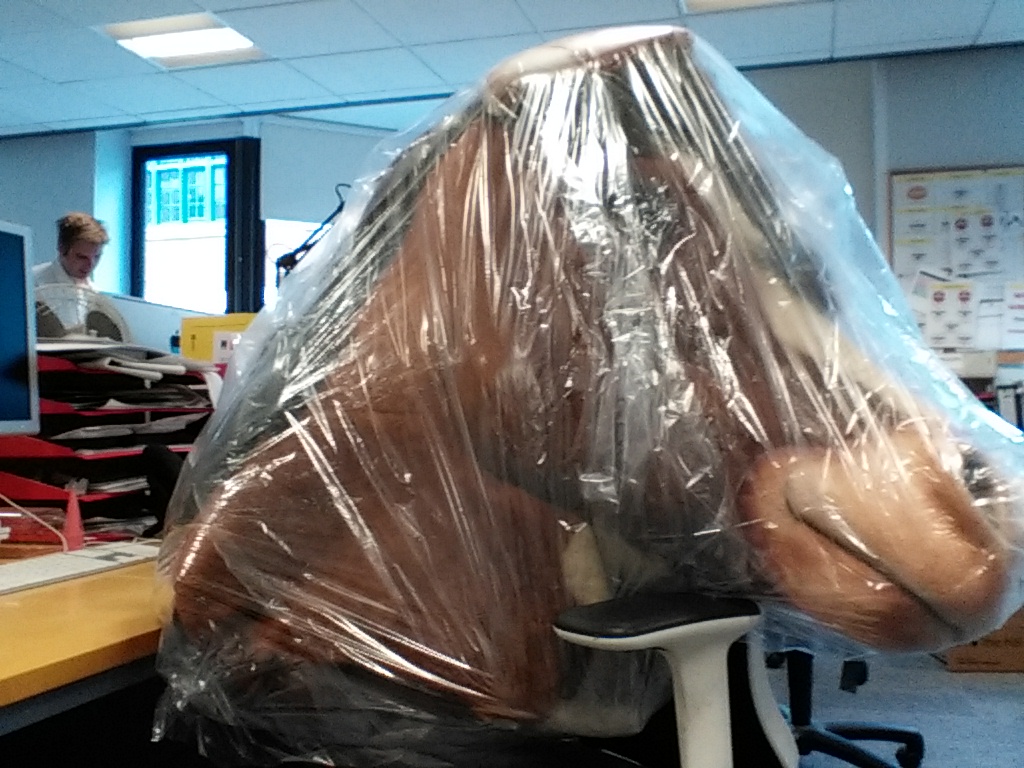One foul sunlit morning in the late 1950s, Dobson sat at the breakfast table gazing into space, like a man whose head was entirely vacant.
“Whatever is the matter, Dobson?” asked the out of print pamphleteer’s inamorata, Marigold Chew, between mouthfuls of boiled cornflake ‘n’ duck’s liver mush, “You are gazing into space like a man whose head is entirely vacant.”
“On the contrary, my darling dearest pippety-poppet,” said Dobson, “My head is a teeming maelstrom of almost inhumanly complicated thought process doo-dah.”
“Oh? And of what are you thinking?” asked Marigold Chew.
“Well, my little pumpkinetto, as you know I have recently been reading – or rather rereading – or rather rerereading – the Memoirs of the plucky club-footed fascist tot Tiny Enid, and I have been struck by the passage in which she recounts how she taught herself to execute, simultaneously, a pirouette and a volte face.”
“The pirouette must have proved tricky with that club foot of hers,” said Marigold Chew.
“Oh, that was the least of her worries,” said Dobson, “And as I am sure you recall, Tiny Enid was a preternaturally agile tot in spite of her infirmity. No, the difficulty she had to overcome was to succeed in rotating her physical body 360 degrees at the very same time as making a mental rotation of just 180 degrees, for if you think about it for a moment, or, as I have been doing, if you think about it throughout breakfast, the volte face is but half a pirouette. If the volte face continued through 360 degrees, one’s mental position would be identical to what it was at the start, just as, in a pirouette, one returns to one’s original physical position. You see?”
“Yes, Dobson, I grasped that much immediately. That is why I have continued tucking into my breakfast while you are prattling. You should eat your mush before it goes cold.”
“I am quite partial to cold mush,” said Dobson, “In fact I think I will leave my bowl and tuck into my breakfast after I have paid a visit to Old Ma Brimstone’s Ballet School next to the post office, where I can brush up on my pirouetting skills.”
And without another word, the out of print pamphleteer donned his Uzbekistani Yak Herder’s boots and crashed out of the door into a sudden and unexpected downpour, the bright battering sun having vanished behind thunderous black clouds sweeping across the sky, terrible as an army of Corbynistas marching with placards.
Trudging along the towpath of the filthy canal, Dobson turned his mind to considering a topic upon which he might attempt to perform a volte face while practising pirouettes. He ran through a series of subjects in his head. Aztecs, bleach, corrugated cardboard, dingly dells, eggs, funk music, geese – geese! Geese made him think of swans, and sure enough, just ahead, upon the canal, elegant yet savage, he saw a swan. Dobson had always hated swans. Well, perhaps he could force himself, while spinning round and round at Old Ma Brimstone’s Ballet School next to the post office, to spin his mind round, but only halfway round, through 180 degrees, so that by the time he completed his physical 360 degree pirouette, he would love swans, adore them. It was worth a try. Resolute, he pressed on through the mud.
Several hours later, Dobson crashed through his front door, sopping wet, just as the clouds dispersed and the sun reappeared in the sky, as bright and battering as Felix Randal’s great grey drayhorse’s sandal.
“Oh hello Dobson,” said Marigold Chew, “How did you get on?”
“Remind me never to go near that Ballet School next to the post office ever again!” cried Dobson, “Even if I have to go to the post office! I do not know what qualifications Old Ma Brimstone possesses, but I very much doubt she ever gained a diploma in the teaching of pirouetting technique. Each time I attempted a pirouette – while thinking about swans – I lost my balance and toppled over, and each time I toppled over I bashed my head on a hard jutting solid something-or-other, beside which Old Ma Brimstone insisted I practise. My bonce has suffered so many thumps that my wits are quite, quite bedizened and I cannot remember what I was doing at that confounded Ballet School in the first place. I am going to go and lie down in a darkened room and wallow in self-pity.”
As Dobson turned away, Marigold Chew reminded him that he had an uneaten bowl of boiled cornflake ‘n’ duck’s liver mush, gone cold.
The out of print pamphleteer spun round, through a full rotation of 360 degrees.
“I hate cold mush!” he declaimed.
From whatever perch in an ethereal plane she was looking down upon Dobson, the plucky tot Tiny Enid applauded him.
“You see?” she whispered through the aether, “It can be done!”
But Dobson’s brain was shattered, and he remained oblivious. And then he toppled over for the umpteenth time that day.

